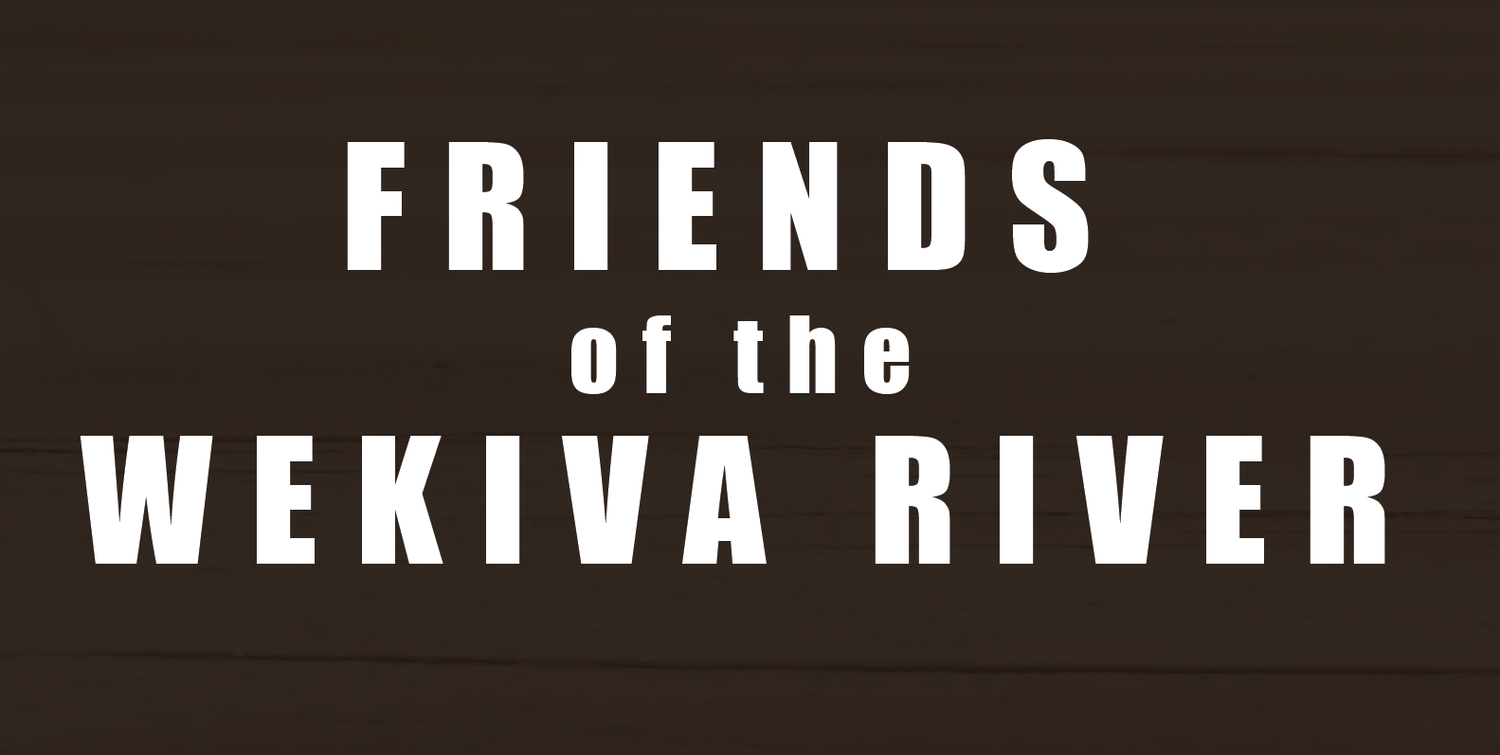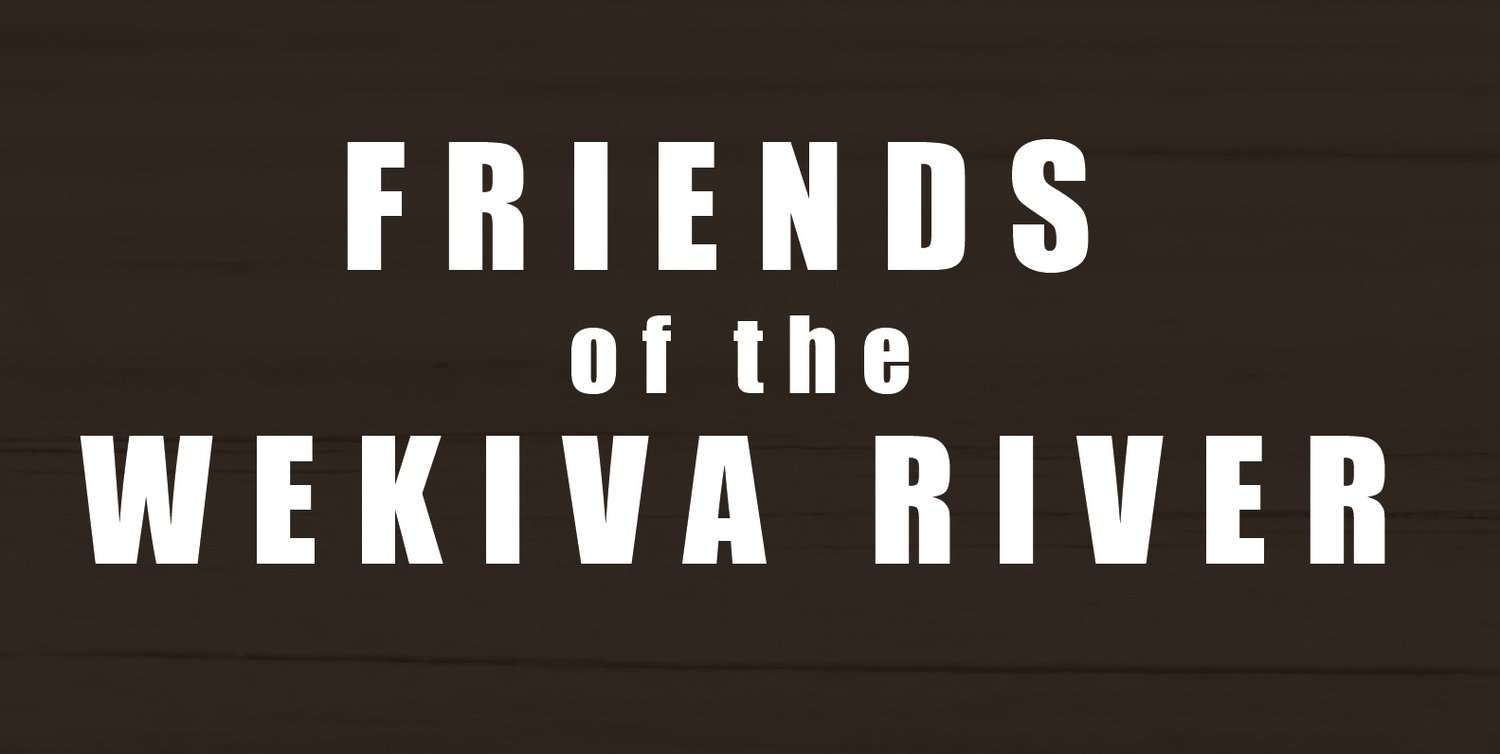Recent Events
April 26, 2025 - Wekiva Wellness: Create Your Own Kokedama!
Back in April, we hosted yet another wonderful Wekiva Wellness program, where you could make your own kokedama! Participants enjoyed the beautiful setting of being outside in nature at Katie’s Landing while getting their hands dirty making unique Japanese-style moss ball planters.
It was a relaxing morning with a great activity and great company. Big shoutout thanks to LeAnne for leading us and to all who came out to join the fun! Sad you missed out? Don’t fret, FOWR will be offering more events in the fall, including additional Wekiva Wellness gatherings. Keep an eye out for more dates coming soon!
May - June 2025 - Dragonfly Mercury Project
On May 1, 10, 19, and June 13, volunteers from around Central Florida gathered at 5 different locations around the Wekiva basin (Lake Norris, Camp Joy, Katie’s Landing, Wekiwa Springs Run, and Wekiva Falls) for an important task: catching dragonfly nymphs for a national mercury study!
The Dragonfly Mercury Project is a nationwide study that monitors mercury levels in the environment to determine dangers for local humans and wildlife. It’s a hands-on community science and volunteer-based project that collects dragonfly larvae for mercury analysis. Mercury can be toxic to humans and wildlife, and the data collected can help scientists better understand and prevent mercury contamination. Mercury and other contaminants reach parks through air pollution. These contaminants are cause for concern as they do not break down and can build up in the tissue of organisms, causing disease in wildlife.
Why baby dragonflies? Dragonflies spend most of their life in the water as juvenile larvae, where they are an indicator of mercury levels in the environment. These larvae eat smaller insects and even fish, taking up the mercury inside their prey when they feed. Their size makes them easy to catch and sample, making them the ideal bioindicator of mercury levels in an area.
Check out this video on identifying dragonfly larvae, or download the official NPS DMP sampling guide here to learn more. You can also explore this interactive map to learn more about the findings of the study in our area. The sites around the Wekiva basin are documented as having low to sub-level impairment.
The 2025 sampling season is over but if you want to participate next year, be sure to follow Wekiva Wild and Scenic River for future 2026 date announcements.
Big thanks to Ashley Konon, the Wekiva Wild and Scenic River Ambassador, who led and organized the samples, and to all the wonderful and hardworking volunteers who came out and faced the sun and the mud in the name of science! We hit our collection goal at each site and did it all with smiles and laughter. Can’t wait for next season!
June 1, 2025 - Board Member Paddle - Blackwater Creek
Jay Exum suggested to Friends of the Wekiva board that we paddle all the rivers and tributaries that make up the Wekiva Wild and Scenic River. The purpose being to experience each section, to understand it’s unique features and contribution to the system.
Our first paddle took place on a section of Blackwater Creek in Seminole State Forest. We began paddling upstream towards the Steel Bridge. A slight cool front had moved through central Florida and the air was dry and clear. The still water reflected the over-arching trees and the hanging vines. The water is always very dark due to decaying vegetation and tannins that leach out. The creek is surrounded by swamp and forested wetlands. Over 20 named springs flow into the creek. (There is a place to dock and explore Moccasin Spring.)
After paddling for about 3 miles we came to as series fallen tree/branch jams. The group decided we had had the best of the day and turn back. The reward…we were paddling with the current!
What a beautiful morning in an enchanted forest, paddling on a mysterious backcountry creek and accomplishing our goal for the day.










































